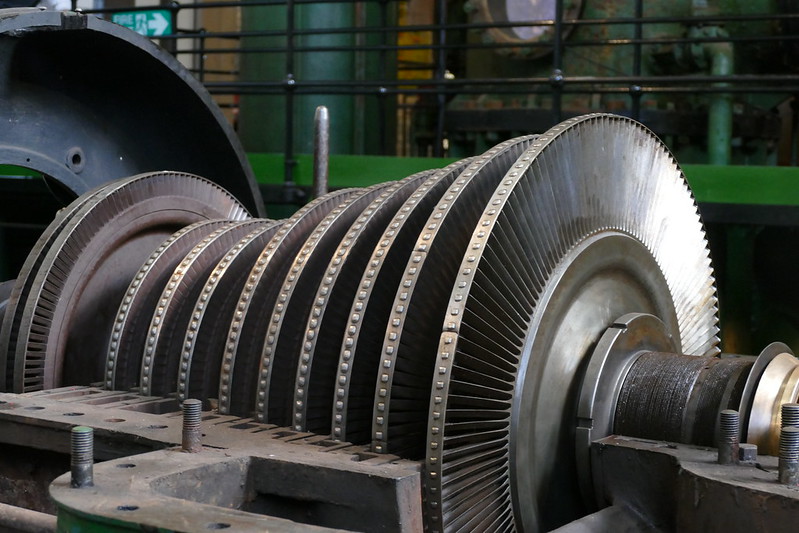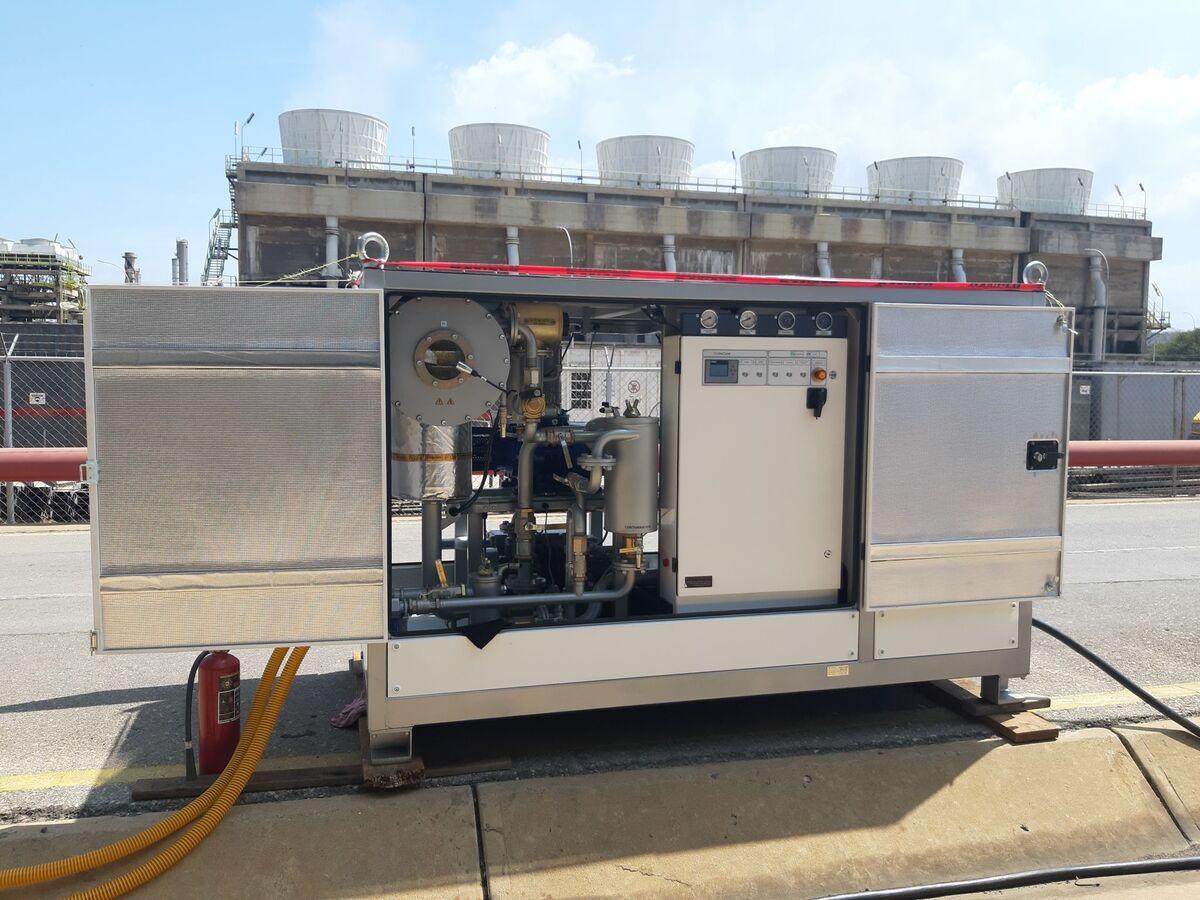In this article, we will speak about Fyrquel fire-resistant liquid, in particular, its features, usage, servicing, and possible approaches to treatment and reclamation of operational properties.
So, what is Fyrquel fire-resistant liquid and why are we speaking about it today? Historically, mineral oils were the first to be used in power-generating systems. However, increased temperatures and pressures in such systems led to fires after splashing of hydraulic liquids from damaged pipelines onto hot surfaces. Therefore, there arose a natural need to replace mineral oils with liquids of fundamentally different type which would be characterized by fire resistance, i.e. a higher flash point, and self-extinguishing ability.
Fyrquel is a phosphate ester that will neither sustain combustion and feed the flame when they arise, nor spread in the stream of liquid ejected under pressure from the equipment. In addition, Fyrquel liquid is characterized by good lubricating properties, a high thermal oxidation stability and a long service life.
Currently, the application fields of Fyrquel fire-resistant liquid and its varieties include:
- electrohydraulic control systems of steam turbines;
- lubrication of steam turbines;
- lubrication of gas turbines;
- hydraulic systems of steel smelting furnaces;
- piston-type air compressors, etc.
Special aspects of Furquel liquid usage
Usually, manufacturers of phosphate esters, including, but not limited to Fyrquel liquid, claim a long service life for their products, which can be commensurate with the service life of a steam turbine. However, this requires proper servicing. If such liquids are not serviced as required, it may lead to corrosion, valve jamming, and malfunctioning of the entire system.
What are the most common problems associated with the usage of Fyrquel liquid? The first problem is hydration. At an increased level of moisture, phosphate esters can decompose to form alcohols and acids. Alcohols can further oxidize which leads to formation of varnish deposits. Therefore, it is recommended to maintain the humidity level not above 500 ppm.
Another problem is oxidation. Like other hydraulic liquids, Fyrquel can decompose under oxidation and high temperatures. Contamination and decomposition products cause a decrease in the resistivity of liquid. Contact of a low-resistivity liquid with a valve can give rise to corrosion of the valve.
When exposed to extreme temperatures, phosphate esters develop dark particles of submicron size which cause valve silting and accelerate filter clogging as time goes by. Furthermore, degradation of fire-resistant liquids can be accompanied by accumulation of acid and formation of sludge.
The use of contaminated liquid leads to valve sticking, corrosion, filter clogging, etc.
Why is change of Fyrquel liquid advantageous?
Change of Fyrquel liquid entails high financial costs. In addition to the cost of buying a new liquid, the financial costs can include the downtime of power-generating equipment which may last up to two weeks or even longer, the cost of labor compensation for workers changing the liquid, payment for disposal of used liquid, purchase of flushing liquid (if required) and its disposal. In a best-case scenario, the cost of changing fire-resistant liquids will be measured in tens of thousands of dollars. And in case of power-generating equipment failure due to contamination of fire-resistant liquid, losses can reach millions of dollars.
Therefore, a good alternative to change of fire-resistant oil is to maintain it in good condition by using special equipment that implements a comprehensive treatment procedure.
 Treatment of Fyrquel fire-resistant liquid using GlobeCore technology
Treatment of Fyrquel fire-resistant liquid using GlobeCore technology
GlobeCore has developed a comprehensive treatment technology that allows maintaining the condition and operational performance of Fyrquel fire-resistant liquids at a high level. This technology is implemented in CMM units within the capacity range of 1,000–10,000 liters per hour.
The principle of operation of these units is as follows. First, Fyrquel liquid alternately passes through two filters (the filtration fineness can be selected by the customer depending on the special aspects of fire-resistant liquid usage); next, it is heated and fed into a vacuum chamber. In the vacuum chamber, the fire-resistant liquid gets to the activator filter which increases its surface area for more efficient moisture and gas removal driven by vacuum.
Then, Fyrquel fire-resistant liquid flows down the chamber wherefrom it is extracted by a pump and passes through another filter with a filtration fineness of five or one micron. At the unit’s outlet, the treatment quality of the fire-resistant liquid corresponds to the 14/12 purity class of ISO 4406.
GlobeCore units for treatment of fire-resistant liquids are equipped with a two-stage vacuum system consisting of a backing pump and a booster pump. The presence of such system offers several advantages at once. The first advantage — the fire-resistant liquid enters the chamber when driven by vacuum, so a separate input pump is not required. The second advantage — creating a vacuum level of up to 2 millibars in the chamber for efficient drying and degassing of fire-resistant liquid. GlobeCore units also use Viton seals resistant to Fyrquel liquids.
Therefore, the use of GlobeCore technologies allows removing the particulate matter, moisture, and gases from Fyrquel fire-resistant liquid in a timely manner extending its service life and enhancing the reliability of power-generating equipment.


